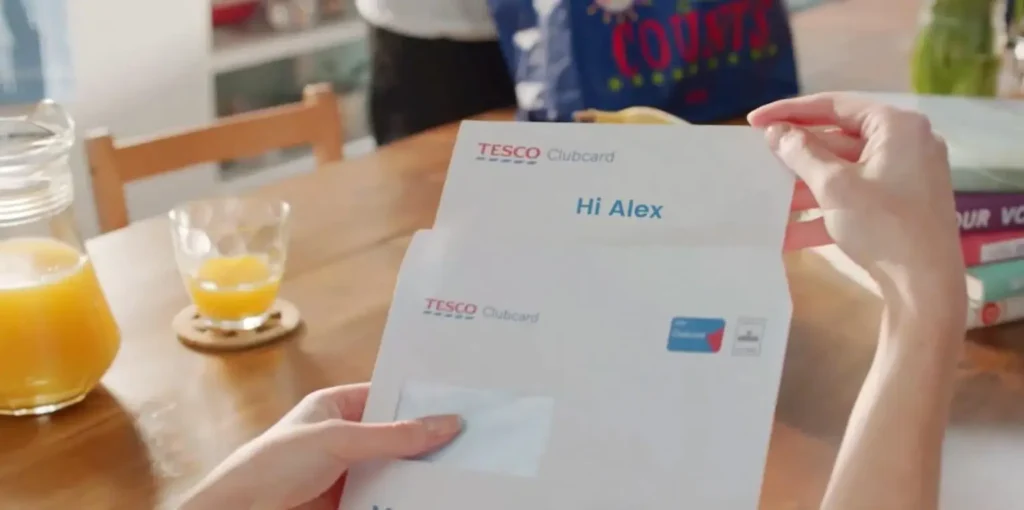Interactive Videos are on the rise when it comes to digital content, and it’s a trend that brands need to be paying attention to. According to the latest research, 79% of consumers are interested in receiving Interactive Videos from brands, with the demand most strongly driven by Gen Z and high-earners.
Going beyond the traditional passive viewing experience, Interactive Video kicks things up a notch by allowing viewers to actively participate and engage with the content. Whether it’s clicking to learn more about a product or even customizing a video’s storyline, interactivity lets you make choices, explore different paths and influence the narrative of the video.
This advanced technology is on the rise across industries, with financial brands among the first adopters. So what’s in it for businesses? Here are a few benefits that interactive content can provide for your video marketing campaigns:
- Increased engagement. By letting viewers make choices, answer questions or explore different storylines, you’re transforming passive watching into active participation. This not only means increased engagement but also better information retention.
- Tailored experiences. Interactive Videos can be customized to cater to individual preferences, making the content more relevant and enjoyable for each viewer.
- Memorable messages. Interactivity opens up new possibilities for storytelling, enabling you to create immersive and memorable experiences that make an impact.
Now that we’ve established some of the advantages of Interactive Video, let’s break down the different types of interactivity you can use in your videos.
Different Types of Interactivity
From boosting conversion rates with clickable CTAs to creating a choose-your-own-adventure experience, here are some of the interactive elements you can add to take your video to the next level.
Clickable Calls-To-Action: Boost Conversions With Interactive CTAs
Call-to-action (CTA) buttons are a well-known tool in every marketer’s arsenal. Usually, though, they appear outside of the video, adding an extra step for the viewer.
In an Interactive Video, the CTA can be seen and clicked within the video, boosting engagement and conversion by streamlining the experience. These CTA buttons can open links, such as to a webpage for users to make a purchase or learn more about the brand or even trigger APIs.
Check out how Optimum’s “Shop Now” button is directly clickable from within the video below.
Highlighted Elements: Guiding Viewers Through the Experience
Have you ever wished for a way to keep track of what you’ve seen in a video? Highlighted elements mark visited chapters or clicked elements, much like how visited links are highlighted on a web page. This ensures that viewers don’t lose their way in a video with multiple sections or options.
Branching: Choose-Your-Own-Adventure Storytelling
Remember those choose-your-own-adventure books where you could decide the character’s fate? Interactive Videos with branching work in a similar way, allowing viewers to make choices that determine the direction of the video.
Depending on their selections, users can jump to different positions in the video or even enjoy a new video generated in real time based on the data they input into the player. This keeps viewers engaged by providing them with a tailored and relevant experience.
Branching is often a great addition to the onboarding experience, as seen in the onboarding video below. Customers can pick and choose which topics they want to learn more about, which not only shows that the brand values their time and input but also ensures that the overall viewing experience is more enjoyable for each unique user.
This feature can also be used to create interactive quizzes.
Consider an employee training video — like the one by Lancôme below — where the scenes that each viewer sees are dependent on whether they pick the correct answer or not.
Chapter Markers: Navigating With Ease
Chapter markers display the various parts of a video in a menu format at the top. These markers offer an easy way for users to return to a specific scene or skip ahead, providing a user-friendly experience that enhances video navigation. This can be particularly useful for long educational videos, where viewers might want to jump to the most relevant content quickly.
Hotspots: Going Beyond the Button
You don’t need to rely only on conventional buttons. With hotspots, any element can be interactive, whether that’s text, images or even other videos within the video. And since interactive hotspots can be designed in the same software as any other video element, you can be confident that they’ll blend in seamlessly with the rest of your content.
Pro tip: Use this feature to create shoppable videos where viewers can simply click on a product they’re interested in and get redirected to the product page for purchase.
Gamification: Adding an Element of Fun
Who doesn’t love a little challenge? Gamification brings the fun of playing games to your content while also effectively keeping users engaged and motivated.
For instance, you could add interactive elements that let users complete challenges within the video. Once they succeed, they could get rewarded with a discount or a prize they can claim right from the video. The result? An experience that not only entertains but also incentivizes viewers to engage more deeply with your content.
Surveys: Collect Data
These days, viewers can answer questions and write out responses right in the video.
With the survey feature of Interactive Videos, you can gather valuable first-party data that can be used to inform your marketing strategies or even generate a new video in real time based on the viewer’s answers.
Swipe Gestures: Mobile-Friendly Navigation
With so many people using touch-screen devices to consume content, swipe gestures are an essential feature to consider. Instead of clicking, users can simply swipe to navigate between chapters and videos.
User Customization: Real-Time Updates
User customization takes interactivity to the next level, allowing viewers to update the video in real time by inputting their own data or selecting their preferred options. From user-generated content (UGC) videos to video calculators, this feature helps keep your content relevant for all viewers since you can rely on them to put in their own information.
Try this interactive feature out for yourself with the car payment calculator below, where you can adjust the features of a car to your liking and be presented with a personalized car payment estimate.
Chat: Turn Videos into Conversations
Let’s say you just watched a video from a brand. You might have some follow-up questions or perhaps are ready to take that next step. Now, imagine being able to easily chat with a support team member or salesperson from right in the video player. That’s something that Interactive Video makes possible.
Adding chat functions to video means users can engage in conversations without having to leave the player. This provides a more visual experience, adding a human touch that’s often lacking in traditional text chat.
Form Fills: Simplify Data Collection
In a nutshell, form fills in Interactive Videos simplify the process of collecting user data. Think of it as combining a video tutorial with the form-filling process. With visuals and voiceovers guiding users as they fill out their forms, viewers are more likely to provide accurate information, have fewer questions and overall enjoy the user-friendly experience.
Hover Interactivity: Effortless Engagement
Not every interaction requires clicks. Hover interactivity refers to the subtle effects, such as shading or enlargement, that appear when a user hovers over a clickable element. This interactive feature makes the experience much more user-friendly and engaging.
All of these different forms of interactivity open up exciting possibilities for creating engaging and captivating videos. Depending on your goals and the nature of your content, you can choose the type of interactivity that best suits your needs.
Ready to revolutionize your video content? Keep on reading to learn how. We’re breaking down the essential steps to elevating your audience’s experience with Interactive Video.
6 Steps To Creating Interactive Video
Whether you’re looking to promote a product, educate your audience or simply delight your customers, Interactive Videos are an invaluable tool. But how do you create one? Here’s a step-by-step overview of the process.
1. Define Your Goals
What do you want to achieve with your video? Are you aiming to boost engagement, increase sales, educate your audience or something else entirely? Identify your goals and then do your homework and research what your target audience wants and needs. Understanding your goals and audience will help you shape the content, design and interactivity of your video.
Interactive Videos are versatile and can be used in all kinds of ways, from product demonstrations to tutorials to quizzes. Only by identifying your goals can you create a clear, measurable and realistic plan for achieving them.
2. Choose the Right Platform
Post on
The next step is to select an Interactive Video platform. There are numerous video tools and platforms available that make the video creation process smooth and accessible for creators of all levels. Some potential platforms include Adobe Captivate, Wirewax, ThingLink and Camtasia.
Idomoo’s own Next Generation Video Platform makes creating Interactive Videos a breeze with its drag-and-drop web interface, full suite of interactivity options, and easy distribution via email, social media and more. And with up to 100x real-time rendering, your viewers can enjoy interacting with cinematic quality videos within seconds of clicking play.
When deciding on a platform, consider factors like your budget, technical expertise and the level of interactivity you want. You may also want to consider the platform’s analytics capabilities, as you’ll want to track user engagement and measure the effectiveness of your videos.
3. Map Out Your Interactivity
Interactive Videos can take many forms, from simple decision-based branching to complex quizzes and gamified experiences. Before you start shooting or creating your video content, you need to plan and map out how users will interact with your content. This is where you can let your creativity and strategy fly.
The key is to align your interactive elements with your goals. How do you want to engage your viewers? What actions do you want them to take? What types of interactivity will help you achieve that? For example, if you want to increase brand awareness, you might incorporate clickable links that lead to more information about your products or services.
It can be helpful to create a storyboard to visualize the flow or reach out to your platform partner for help. Remember that interactivity should complement the message rather than be the main attraction. Don’t overwhelm viewers with too many interactive elements. Each interaction should contribute to the overall narrative and experience.
4. Create Your Video Content
With your interactivity plan in hand, it’s time to create your video content. This step involves shooting or editing the video footage, designing animations or creating graphics, depending on your project.
Storytelling is key in Interactive Videos, so craft a compelling narrative that will hold your viewers’ attention. Keep in mind that user engagement increases when the video content is relatable, relevant and easy to understand.
5. Add Interactivity to Your Video
This is where the magic happens. Using your chosen platform’s tools, you’ll add the interactive elements that bring your video to life.
Remember that interactivity should enhance the viewer’s experience, not complicate it. Make sure that viewers can easily navigate and interact with your video. Be mindful of the timing and placement of these interactive elements. Ensure they appear at the right moments to maintain the viewer’s interest.
6. Test and Publish Your Video
Before sharing it with your audience, conduct thorough testing to identify and resolve any issues. Check for broken links, navigation problems and technical glitches.
Once you’re confident that your Interactive Video is polished and functional, it’s time to publish or distribute it. Depending on your platform, you may have various sharing options, such as embedding on your website or sending it via email. Don’t forget to monitor its performance, gather data and make adjustments based on the feedback and metrics you receive.
Turning Interactions Into Connections
As we’ve seen, Interactive Video content has the potential to captivate and engage your audience in ways traditional video simply can’t. And the best part is that adding interactivity to your videos is no longer reserved for tech geniuses. With the right tools and resources, you’re just a few clicks away from creating a dynamic and engaging video experience.
At Idomoo, we understand that everyone’s needs are unique and offer a spectrum of options to help make your vision a reality. Whether you prefer the self-serve approach or want white-glove treatment, we’ve got you covered. Get in touch with us today and discover how Interactive Video can transform your brand.







